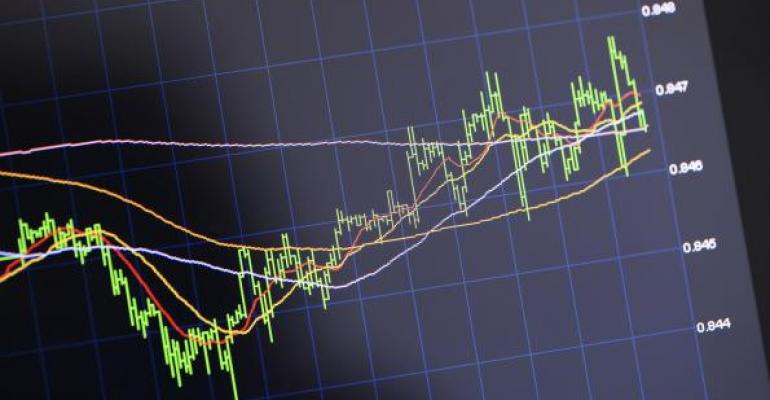As earnings seasons go, this one’s been so-so. Most all S&P 500 companies have reported their Q2 numbers. Among them, 81 percent have met Street expectations, 12 percent have beat estimates and 7 percent missed. That actually doesn’t seem so bad.
Drill down a bit, though, and you see the slowdown in earnings momentum. While EPS is up 4 percent over Q1, year-over-year earnings are down nearly 19 percent.
Consensus estimates for Q3 earnings aren’t very pretty: down nearly 5 percent sequentially and off 23 percent from last year.
Such ciphers understandably make equity investors nervous. Some investors, but not all. Of late, there’s been a risk resurgence among stock punters. You can see this reflected in the price spread between the SPDR S&P 500 ETF (NYSE Arca: SPY) and the iShares S&P 100 ETF (NYSE Arca: OEF). If the S&P 500 is touted as a blue-chip benchmark, the S&P 100 must be the bluest of the blue.
There’s a parent-child relationship between the two S&P indices. One hundred of the S&P 500’s largest-cap issues are carved out to populate the S&P 100. Nearly 80 percent of OEF’s constituents are so-called “giants” with market capitalizations exceeding $100 billion. You know, the likes of Exxon Mobil Corp. (NYSE: XOM) and Apple Inc. (Nasdaq: AAPL). Mega-cap stocks make up only 50 percent of SPY’s components, leaving more room for smaller stocks.
Look at the chart below. It portrays the SPY-OEF price premium. SPY gets pricier, comparatively, when equity investors are ebullient; the ETF cheapens when gloom pervades. The premium, thus, is a barometer. As you can see, clouds appeared on the economic horizon back in May. Then, a squall broke out when the Chinese devalued the yuan this summer, sending the SPY-OEF premium careening south of its 50- and 200-day moving averages. The uptrend extending from the 2009 market bottom, however, remained intact.

The premium’s bouncing upward now, getting back above its 50-day moving average and looking to challenge its 200-day average. Thursday’s market action sent its weekly MACD (Moving Average Convergence-Divergence) reading positive for the first time since March.
So, are we out of the woods, equity-wise?
That depends on who you decide to believe. Analysts predict a less-than-sterling earnings environment in Q3. Investors seem to be voting with their feet. And their wallets.
Brad Zigler is REP./WealthManagement's Alternative Investments Editor. Previously, he was the head of marketing, research and education for the Pacific Exchange's (now NYSE Arca) option market and the iShares complex of exchange traded funds.





